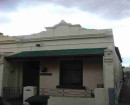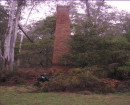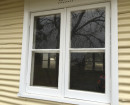Back to search results
BALACLAVA HILL MINE PRECINCT
REEDY LAKE ROAD WHROO, CAMPASPE SHIRE
BALACLAVA HILL MINE PRECINCT
REEDY LAKE ROAD WHROO, CAMPASPE SHIRE
All information on this page is maintained by Heritage Victoria.
Click below for their website and contact details.
Victorian Heritage Register
-
Add to tour
You must log in to do that.
-
Share
-
Shortlist place
You must log in to do that.
- Download report

2025 Balaclava Hill Mine open cut















On this page:
Statement of Significance
The Balaclava Hill Mine Precinct is located on the land of the Taungurung people.
What is significant?
The Balaclava Hill Mine Precinct at Whroo is a well-preserved example of an open-cut reef gold mine dating to the 1850s and 1860s.
The place includes a large, excavated mine cavity up to 25 metres deep, along with a range of features around the slopes of the hill associated with various aspects of the mine’s operation. These include terraces and brick scatters from crushing batteries, an adit that served as an access tunnel for removing ore, and the remains of a tramway formation now upgraded to a walking track. There are also several capped mine shafts, along with pine trees and a brick-lined cistern associated with the residence of the mine owner and manager, John Thomas Lewis.
In addition, the place features the remains of three intact dams built in the 1860s and used for water storage, a large heap of quartz tailings sands that derive from crushing operations at the mine, and three large cyanide vats in which the tailings sands were later reprocessed to extract residual gold.
How is it significant?
The Balaclava Hill Mine Precinct is of historical, rarity, archaeological and representativesignificance to the State of Victoria. It satisfies the following criterion for inclusion in the Victorian Heritage Register:
Criterion A
Importance to the course, or pattern, of Victoria’s cultural history.
Importance to the course, or pattern, of Victoria’s cultural history.
Criterion B
Possession of uncommon, rare or endangered aspects of Victoria’s cultural history.
Possession of uncommon, rare or endangered aspects of Victoria’s cultural history.
Criterion C
Potential to yield information that will contribute to an understanding of Victoria’s cultural history.
Criterion D
Importance in demonstrating the principal characteristics of a class of cultural places and objects.
Potential to yield information that will contribute to an understanding of Victoria’s cultural history.
Criterion D
Importance in demonstrating the principal characteristics of a class of cultural places and objects.
Why is it significant?
The Balaclava Hill Mine Precinct is historically significant for its association with the Victorian Gold Rush, which played a major role in the social, political, economic, environmental and cultural development of Victoria. The place is one of the largest recorded nineteenth-century open-cut reef gold mines in Victoria and is a well-preserved example of its type. The extent of retained features at the Balaclava Hill Mine Precinct – including a large, dramatic and intact open cut rock feature, tunnel/adit, brick scatters, dams, quartz tailing heaps, cyanide vats and coppiced trees – allows a full range of historic open-cut quartz mining, quarrying and processing techniques to be readily understood, as well as the associated life on the mine through the remnants of John Lewis’ house (brick-lined cistern and Aleppo Pine tree).
(Criterion A)
The structure of the ore body at the Balaclava Hill Mine Precinct was uncommon in the Victorian gold province, featuring small but rich auriferous quartz reefs and spurs oriented in several directions and located close to the surface, which resulted in open-cut mining at the site, utilising techniques generally associated with quarrying. In contrast, most gold reefs in Victoria were mined using shafts and tunnels. In addition, the place is uncommon for the remnant evidence of the early securing of a water-right licence for quartz mining through the three dams which form part of the place. Lewis’s far-sighted application was No.3 of around 900 water-right licences taken out in Victoria by the end of the nineteenth century. Most water-right licenses were held by alluvial sluicers and only a small number were held by quartz miners. The dams are evidence of an uncommon approach to secure water for quartz mining.
(Criterion B)
The Balaclava Hill Mine Precinct is archaeologically significant for the array of well-preserved physical features associated with historical reef gold mining, including shafts and adits, dams, a tramway/track, coppiced trees, quartz tailings and cyanide vats. These have the potential to yield significant information about the development, expansion and contraction of Victoria’s mining history.
(Criterion C)
The Balaclava Hill Mine Precinct is notable for clearly demonstrating the principal characteristics of a historical open-cut reef gold mine through the large, dramatic and intact void in the hill, along with shafts and adits, coppiced trees, quartz tailings and cyanide vats. The three dams represent one of the earliest intact mining water systems associated with quartz mining in Victoria. The associated life on the mine is demonstrated through the remnants of John Lewis’ house (brick-lined cistern and Aleppo Pine tree). The place is readily legible as one of the largest, most dramatic and best-preserved examples of historical open-cut reef gold mining in Victoria.
(Criterion D)
Show more
Show less
-
-
BALACLAVA HILL MINE PRECINCT - History
Gold discovery in Victoria
Gold was first discovered at several locations in Victoria during 1851, igniting one of the great nineteenth-century gold rushes. People flocked to Victoria from around the world, with the population of the colony increasing from 77,000 to 540,000 in the decade to 1861. As the initial rush matured into a substantial mining industry, gold transformed Victoria into one of the richest places in the British Empire. Gold stimulated political reforms including universal male suffrage and the secret ballot. It also paved the way for widespread home ownership and underpinned the birth of the union movement. Few miners made fortunes, but most found the social and economic opportunity they craved. Victorian mines eventually produced around 78 million ounces of gold (approximately 2500 tons), representing two per cent of all the gold ever mined globally. The gold rush was one of the most important events in Australian history.
For First Peoples, Victoria’s gold rush was not a story of fortune or progress – it was a catastrophe. Mining was a force that tore through landscapes and lives, stripping riverbanks, gutting forests, and carving deep wounds into the earth. Sacred sites were desecrated. Land was excavated and exploited. The profits reaped would never flow to the very people who had cared for and stewarded the land for centuries. The gold rush did more than unearth precious metals: the theft of Aboriginal Country and its environmental destruction was part of the process of dispossession, as Victoria was rebuilt in the image of the Empire with the wealth generated from gold.[1]
Gold mining techniques
The gold rush in Victoria was based on two main types of gold sources in Victoria: quartz reefs and alluvial deposits. Quartz reefs are ore bodies hosting gold-quartz mineral veins deposited several hundred million years ago. Alluvial deposits comprise gold-bearing sands and gravels eroded into creeks and gullies from exposed quartz reefs. Most alluvial deposits in Victoria and around the world are geologically shallow, found within the top 20 metres or so of the ground surface. Victoria was unusual for also having ‘deep lead’ alluvial deposits where ancient rivers were capped by layers of basalt or sediment from later volcanic or depositional activity. Deep leads are generally more than 30 metres below ground level.
Alluvial mining
Alluvial gold in creeks and gullies was the easiest to find and recover, and formed the basis for early production on most goldfields during the 1850s. Miners used pans, cradles, rockers and puddling mills to separate gold from the washdirt. These techniques needed large volumes of water, and miners often went to great lengths to secure adequate supplies. Ground and hydraulic sluicing extended these methods from the mid-1850s onwards. In ground sluicing, miners diverted a flow of water over a working face to loosen the overburden and wash the dirt into long timber boxes lined with ripples to recover the tiny gold flakes. Hydraulic sluicing directed a flow of water into pipes that narrowed to a nozzle, with the high-pressure water blasting the washdirt into boxes to retrieve the gold. Dredges worked directly in riverbeds and adjacent floodplains and used buckets on conveyor belts to lift the gravels and process them on a floating barge.
Deep lead alluvial mines processed the deposits in similar ways to shallow alluvial workings, using cradles, shakers and puddling mills. Miners first had to gain access to the gravels at depth and raise them to the surface. Where gravels had been consolidated into ‘cements’ they required crushing in stamp batteries before washing. Deep alluvial mining thus required the kinds of technology and equipment generally found in quartz mines to initially access and recover the deposits.
All kinds of alluvial mining produced vast quantities of semi-liquid waste or sludge, most of which remains deposited across the Victorian goldfields and downstream rivers today. There are five key types of alluvial mining:
· Shallow workings: shafts up to 10 metres deep, often surrounded by piles of mullock or waste rock. Often close together, these workings characterise the small claim sizes of the early gold rush period. There may be puddling troughs nearby for treating heavy clays.· Deep leads: shafts more than 30 metres deep and potentially 100s of metres below the surface, with a single large mullock heap and potentially footings from winding engines and other surface equipment.· Ground sluicing: voids created by directing streams of water over the ground. Characterised by low cliffs (<5 m), ditches and dams, and large piles of cobbles on the base of the void.· Hydraulic sluicing: voids created by high-pressure hosing to undermine hillsides; characterised by high, steep cliffs (>5 m) and large piles of cobbles on the base of the void, accompanying ditches and dams from the water supply system.· Dredging: uneven, hummocky ground with no or poor topsoil.
Reef mining
Quartz reef mining involved the extraction of gold-bearing ore via shafts and tunnels and hauling it to the surface for processing. This involved the extensive use of boilers, steam engines, winders, and other machinery to dislodge the ore and to move personnel and mined material from the ore body to the surface.
Once recovered, the ore was fed into the mortar box of a stamp battery and crushed into a sandy slurry, then forced onto amalgamating tables covered with copper sheets coated with mercury. The fine gold particles adhered to the mercury and water carried away the sand and minerals. The gold-mercury amalgam was then heated and smelted to refine the gold. The diverse and complex ores of the Victorian goldfields meant each mine had to adjust its processing techniques to extract as much gold as possible.
There are two key types of quartz reef mining:
· Shaft and adit mining: reefs are accessed through vertical shafts or horizontal tunnels (adits) from the surface, with horizontal drives into the ore body. Surface evidence may include the opening to the shaft or adit, large mullock piles, machinery foundations and tailings (waste produced after processing). This is the most common form of quartz reef mining in Victoria.· Open-cut mining: reefs are close to the ground surface and accessed directly. Surface evidence includes large voids, large mullock piles, machinery foundations, and tailings (waste produced after processing).
Whroo goldfield
The Whroo Goldfield and Balaclava Hill Mine Precinct is located on the lands of the Taungurung people. The Taungurung people occupy much of central Victoria with their country encompassing the area from the Campaspe River to Kilmore in the West, eastwards to Mount Beauty and from Benalla in the north down to the top of the Great Dividing Range. Traditionally, the Taungurung people lived a hunter/gatherer existence. The various clan groups migrated through their territory dependent upon the seasonal variations of weather and the availability of food. The Taungurung people are closely affiliated with their neighbouring tribes through language, ceremonies and kinship ties and are part of an alliance with the five adjoining tribes to form the Kulin Nation: the Woiwurrung, Boonwurrung, Wathaurung and Djadjawurrung (Taungurung Land and Waters Council: https://taungurung.com.au/).
Alluvial gold was discovered at Whroo in 1853, around the same time as the diggings began at Rushworth, 6 km to the north. Other mining settlements developed in the area including Moora, Waranga and later Baillieston along with several Chinese camps. William Howitt described the Whroo goldfield, which was on the main track from Bendigo to Beechworth, as ‘the driest and hottest and most uncomfortable [place] that could be imagined’ (Howitt 1972(II):91). The dry climate and hard ground at Whroo meant that puddling mills soon became the primary means of working alluvial claims. A township of one square mile was laid out in 1854 (Figure 15), with Balaclava Hill at the northern edge of the village.
Quartz reef mining began at Whroo in the mid-1850s and within a few years the township featured numerous slab huts and tents scattered among various gold workings. There was also a butcher, baker, hotel and a small store, along with school and police reserves. The population of Whroo peaked at around 2200 in 1858 but numbers fluctuated widely over the years.
By 1860 many of the puddling mills had passed into the hands of Chinese owners, but there were various quartz reefs being worked as well, along with the Balaclava Hill mine. Rushworth became the regional centre of the Waranga mining division, although Balaclava Hill was the richest mine in the area.
By the late 1860s the mining industry at Whroo was beginning to decline, with the rush to Spring Creek (Graytown) in 1868 drawing many workers away. Alluvial and quartz reef mining at Whroo and nearby areas was petering out by the early 1870s, although quartz mining revived around Rushworth in the 1880s. The Menzies Tributing Company also worked the Balaclava Hill mine profitably for several years during this period. Cyaniding works were established around 1900 to re-process old tailings from the Balaclava Hill Mine, and small-scale, sporadic attempts were made to work the mine until the 1930s. By this time there were only a handful of families still at Whroo, and the Second World War meant the end of mining. The Whroo goldfield was located in the Waranga division of the Sandhurst Mining District.
History of Balaclava Hill Mine Precinct
Quartz mining at Whroo began with the discovery of gold in the Balaclava Hill Reef around 1855. The discovery is generally attributed to John Thomas Lewis and his partner, James Nickinson, both of whom arrived in Melbourne at the onset of the Victorian gold rushes in September 1852. In the following years there were also extensive workings in the hills and gullies around the Balaclava Hill Mine. John Lewis remained as manager and majority owner of the mine until 1870.
Balaclava Hill is the central feature of the Whroo diggings. It was characterised geologically by Silurian slates and sandstones carrying auriferous quartz (Baragwanath 1925; Phillips et al. 2003:385). This geological formation was a deposit in which the ore was distributed in auriferous veins and spurs throughout a mass of rock. The extensive nature of the ore body, containing at least a dozen gold-bearing quartz veins, meant that Balaclava Hill was mostly quarried in an open cut rather than mined via shaft sinking. The hill soon proved to be very rich, with thousands of ounces of gold recovered by Lewis and Nickinson in the late 1850s (Lewis 1977:8). Most of the working miners and their families lived in the township of Whroo or surrounding areas. The population of Whroo peaked in 1858 and the township included a school, several stores and a Chinese camp (Figures 16 and 17). In the following years, however, the population declined to a few hundred people.
In 1860 John Lewis established the Balaclava Hill Quartz Mining Company, hoping to expand the mining lease and install pumping and winding machinery and a larger crushing battery. However, the share issue was not filled so Lewis pivoted to retreating his waste rock and battery tailings with amalgamating pans and mercury to extract residual gold. Over the next few years he purchased and consolidated several neighbouring leases, installed a large steam engine to drive his stamp battery, and began prospecting nearby reefs. In 1862 Lewis began to develop the open cut on Balaclava Hill, working the ore body as a face. The following year contract miners began excavating a tunnel 76-metres long at the base of the cut to remove the ore via a tramway to the stamp battery (Lewis 1977:55). Miners worked the face by blasting hundreds of tons of rock at a time, similar to quarry works.
Lewis also took considerable pains to secure a reliable and legally binding water supply for the Balaclava Hill Mine. In October 1862 he began construction of a large dam in Main Gully, at the foot of Balaclava Hill, and the following year he applied for a water-right licence to the 1 million-gallon (4.5 ML) reservoir. The reservoir covered 1.5 acres and had a depth of 21 feet (McIvor Times 2 July 1863:3; Victoria Government Gazette 118, 27 November 1863:2660). Lewis’s far-sighted application was No.3 of around 900 water right licences taken out in Victoria by the end of the century, with most held by alluvial sluicers and only a small number held by quartz miners.
In 1864 Lewis sold a quarter-share of the mine leases to his brother-in-law, Archibald Menzies, who used the profits to build the famous Menzies Hotel in Melbourne (Forster 1965:27; Lewis 1977:56). The local mining surveyor, Henry Boyns Nicholas, praised Lewis and Menzies in 1864 for the scale and organisation of the Balaclava Hill Mine, noting ‘they richly deserve the profits derived from it’, despite the mine yielding barely three pennyweights per ton of crushed ore (Mining Surveyor 1864:45)
During the drought of 1865, Lewis began to develop the underground workings at Balaclava, putting in shafts and drives down to the water level at around 100 metres. A poppet head with winding and pumping engine was installed in 1868, but from this point the fortunes of the Balaclava Hill Mine began to decline. Lewis left the Balaclava Hill Mine and Whroo in 1870, after 15 years of profit and success. He speculated unsuccessfully in tin and copper mines in Queensland, and in 1873 sold his interest in the Balaclava Hill Mine and in other property to discharge his debts. Lewis died in 1906. Architectural historian Miles Lewis characterised his ancestor as a ‘struggling fossicker, lucky quartz reefer, oppressive magnate, feckless speculator, and ultimate failure’ (Lewis 1977:vii).
The mine was leased to tribute workers in the 1870s and 1880s, with sporadic, small-scale mining at Balaclava Hill continuing to the 1930s. Cyanide works were established around 1900 to reprocess the large volume of quartz tailings from the Balaclava Hill Mine. The site of this operation lies on the west side of the Nagambie-Rushworth Road and features three large cyanide vats and a large heap of tailings sands.
Total gold production figures for the Balaclava Hill Mine are obscure, but the period 1856 to 1858 produced thousands of ounces. From 1866 to 1881, Lewis and Menzies crushed 85,804 tons of quartz for a yield of 21,340 ounces (663 kg) of gold (Lewis 1977:75).
[1] Yoorrook: Truth Be Told, Yoorrook Justice Commission, Parliament of Victoria, June 2025, p.8 & 63.
Selected bibliography
Bannear, D. 1993. Historic Mine Sites in the Rushworth (Waranga North) Mining Division. Department of Conservation and Natural Resources, North West Area.
Baragwanath, W. 1925. Balaclava Hill Mine, Whroo, near Rushworth. Records of the Geological Survey of Victoria, Vol.IV:331-33.
Birrell, R. 1998. Staking a Claim: Gold and the Development of Victorian Mining Law. Melbourne University Press, Melbourne.
Chauncy, P. 1857. Plan of the Waranga Goldfield, Embracing the Villages of Whroo, Rushworth, Moora & Waranga in the reputed County of Rodney. Public Records Office Victoria, VPRS 8168/P0002, GF31, Historic Plan Collection.
Flett, J. 1970. The History of Gold Discovery in Victoria. The Hawthorn Press, Melbourne.
Forster, H.W. 1965. Waranga 1865 – 1965. F. W. Cheshire, Melbourne.
Hammond, J. 1981. The Golden Years of Rushworth & Whroo. Second edition, Joyce Hammond.
Howitt, W. 1972. Land, Labour and Gold or Two Years in Victoria. Reprint of 1855 edition, Lowden, Kilmore, Vic.
Lewis, M. 1977. Don John of Balaclava. Brian Atkins, Melbourne.
Mining Surveyor 1864. Reports of the Mining Surveyors and Registrars. Quarter ending 30th September, 1864. Parliament of Victoria, Melbourne.
Phillips, G.N., Hughes, M.J., Arne, D.C., Bierlein, F.P., Carey, S.P., Jackson, T. and Willman, C.E. 2003. Gold: Historical wealth, future potential. In Birch, W.D. (ed.), Geology of Victoria, Geological Society of Australia Special Publication 23, Geological Society of Australia (Victoria Division), pp. 377-433.
Rushworth Chronicle 1890. The Whroo Gold Mines. Series of articles originally published in Rushworth Chronicle.
Smyth, R. B. 1980. The Gold Fields and Mineral Districts of Victoria. Facsimile of 1869 edition, Queensberry Hill Press, Melbourne.
Todd, J. 1995. Colonial Technology. Science and the Transfer of Innovation to Australia. Cambridge University Press, Melbourne.
BALACLAVA HILL MINE PRECINCT - Permit Exemptions
General Exemptions:General exemptions apply to all places and objects included in the Victorian Heritage Register (VHR). General exemptions have been designed to allow everyday activities, maintenance and changes to your property, which don’t harm its cultural heritage significance, to proceed without the need to obtain approvals under the Heritage Act 2017.Places of worship: In some circumstances, you can alter a place of worship to accommodate religious practices without a permit, but you must notify the Executive Director of Heritage Victoria before you start the works or activities at least 20 business days before the works or activities are to commence.Subdivision/consolidation: Permit exemptions exist for some subdivisions and consolidations. If the subdivision or consolidation is in accordance with a planning permit granted under Part 4 of the Planning and Environment Act 1987 and the application for the planning permit was referred to the Executive Director of Heritage Victoria as a determining referral authority, a permit is not required.Specific exemptions may also apply to your registered place or object. If applicable, these are listed below. Specific exemptions are tailored to the conservation and management needs of an individual registered place or object and set out works and activities that are exempt from the requirements of a permit. Specific exemptions prevail if they conflict with general exemptions. Find out more about heritage permit exemptions here.Specific Exemptions:1. All vegetation management, excluding removal or lopping of coppice trees throughout the extent and the Aleppo Pine at the Lewis house site. Vegetation management works must not have the potential to affect archaeological remains.
2. Installation of new Parks Victoria wayfinding/directional, informational and heritage interpretation signage.
-
-
-
-
-
WHROO GOLD PUDDLING MACHINE
 Victorian Heritage Register H1244
Victorian Heritage Register H1244 -
MAIN / BALACLAVA GULLY CYANIDE WORKS
 Victorian Heritage Inventory
Victorian Heritage Inventory -
MAIN/BALACLAVA GULLY PUDDLER & DAM
 Victorian Heritage Inventory
Victorian Heritage Inventory
-
'CARINYA' LADSONS STORE
 Victorian Heritage Register H0568
Victorian Heritage Register H0568 -
1 Alexander Street
 Yarra City
Yarra City -
1 Botherambo Street
 Yarra City
Yarra City
-
-










